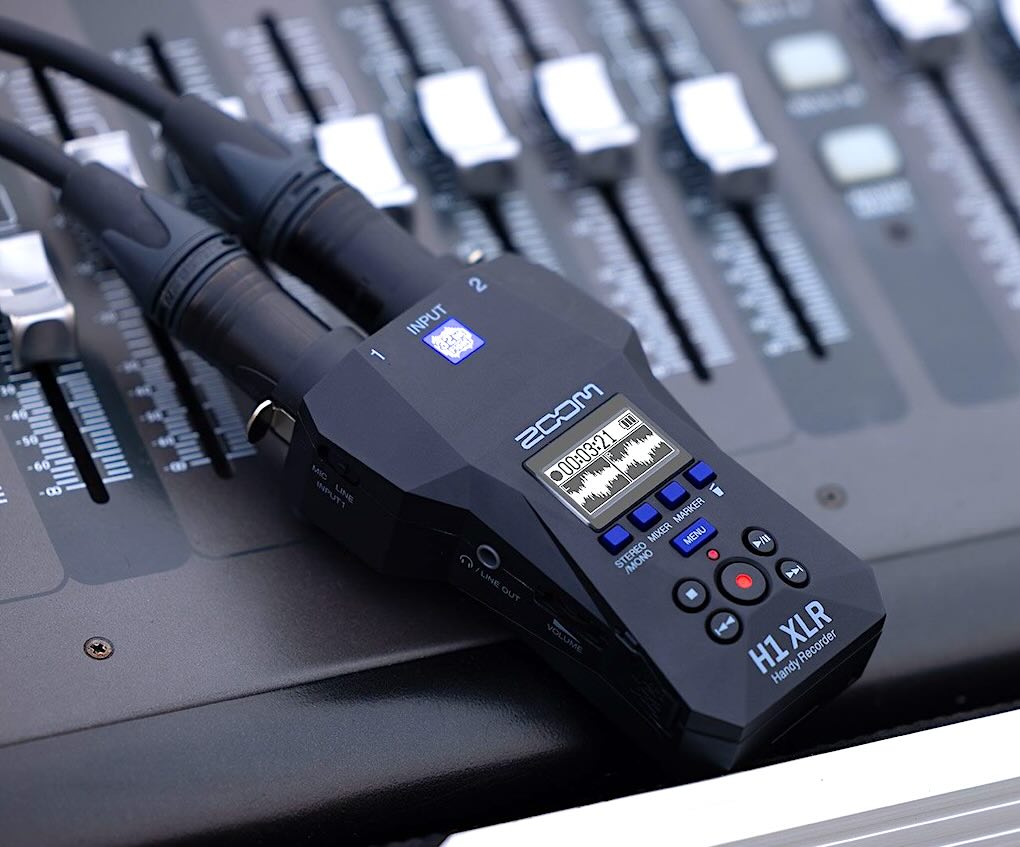- in Production by Bobby Owsinski
New Music Gear Monday: Zoom HR1 XLR Portable 2 Track Recorder
Every musician needs a portable digital recorder for recording gigs, rehearsals, and capturing ideas, but in most cases the ones available have more features than than are needed most of the time. Let’s face it, having the ability to record more than stereo and having microphones leads to a large device, when all you might want is a simple stereo unit. If it’s small, it might not have the input jacks that makes your life easier. That’s why I think the new Zoom HR1 XLR is so brilliant. It’s small, stereo only, doesn’t have built-in mics but does have a couple of much-needed XLR inputs.

Those XLR inputs are a big deal as you no longer have to worry about carrying adapter cables, which as we all know, tend to get lost at the least convenient moments. Plus the inputs on the HR1 can be set for either mic or line feeds, and there’s also a 3.5mm stereo input on the side for recording lav mics or feeds from cameras, phones or other similar devices as well as a USB-C input to connect it to computers, tablets and phones.
Sort Of The Same, But Not Really
The HR1 XLR has more or less the same form factor as previous Zoom recorders, but because it’s somewhat streamlined, it’s smaller, which is essential for any on-the-go musician. Despite its size, it’s easier to use because you can get to exactly what you need with only a few dedicated buttons.
For instance, below high-contrast OLED display is a Mono/Stereo switch, a Mixer switch to access simple mixer, a Marker button, and a Trash button. Below that are the “transport” controls consisting of a large record button in the center with a red record LED above, surrounded by stop, play/pause, fast forward and rewind buttons.
One thing you don’t see are those pesky input controls that everyone loves to hate, as you can never set them at the right level. The HR1 XLR gets around that by using 32 bit float conversion, which is the format preferred by field recordists everywhere. Why? Because it’s impossible to overload regardless of the input level the unit sees. All you have to do is decrease the level in your DAW and you’ll find that your audio has been captured distortion free at a sample rate of up to 96kHz. And it can record on an SD card with a capacity of up to 1TB.
Voice Assistance
Anyone who’s ever struggled with a small monochrome display trying to wind their way through a menu tree knows how frustrating that can be, but the HR1 XLR gets around that by adding voice assistance from it’s built-in speaker. Voices supported include English, Spanish, French, Japanese, German, Italian and Chinese.
This all sounds great so far, but the best part is that the HR1 XLR is only $149, and it’s now available for preorder. You can find out more here, or watch the video below.

